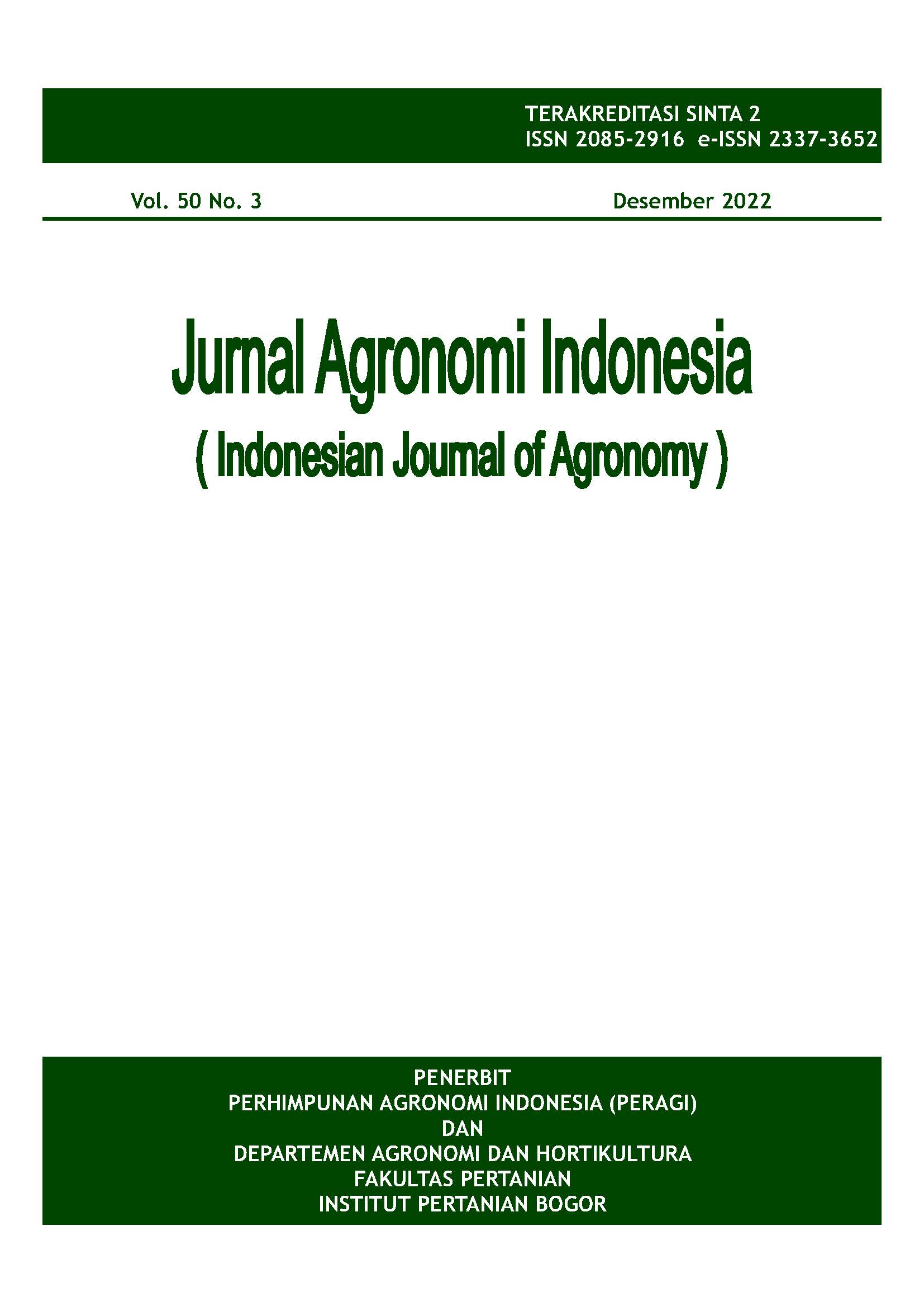Karyotype and Ploidy of Vanda dearei and Vanda celebica Orchid Using Flow Cytometry Analysis
Abstract
The diversity of the Vanda orchid is one of the advantages of plants that are used to make new hybrids. The genus of Vanda has a primary chromosome number (x) = 19 and varies in ploidy level. This study aims to identify the Vanda orchid’s karyotype pattern and ploidy level through flow cytometry. The materials used are orchids Vanda celebica, Vanda dearei, and its hybrids V. dearei x V. celebica and V. celebica x V. dearei. The results showed the number of chromosomes of V. dearei is 2n = 2x = 40, V. celebica is 2n = 2x =38, the hybrid V. celebica x V. dearei is 2n = 2x = 38, and the hybrid of V. dearei x V. celebica is 2n = 2x = 38. The karyotype V. celebica is 2n = 2x = 17m+2sm, V. dearei is 2n = 2x = 40 =18m+2sm, the hybrid of V. celebica x V. dearei is 2n = 2x = 38 = 17m+1sm, and hybrid of V. dearei x V. celebica is 2n = 2x = 38 =17m+1sm. All observed ploidy levels of orchids are diploid.
Keywords: cytology, diploid, genetics, hybrid













